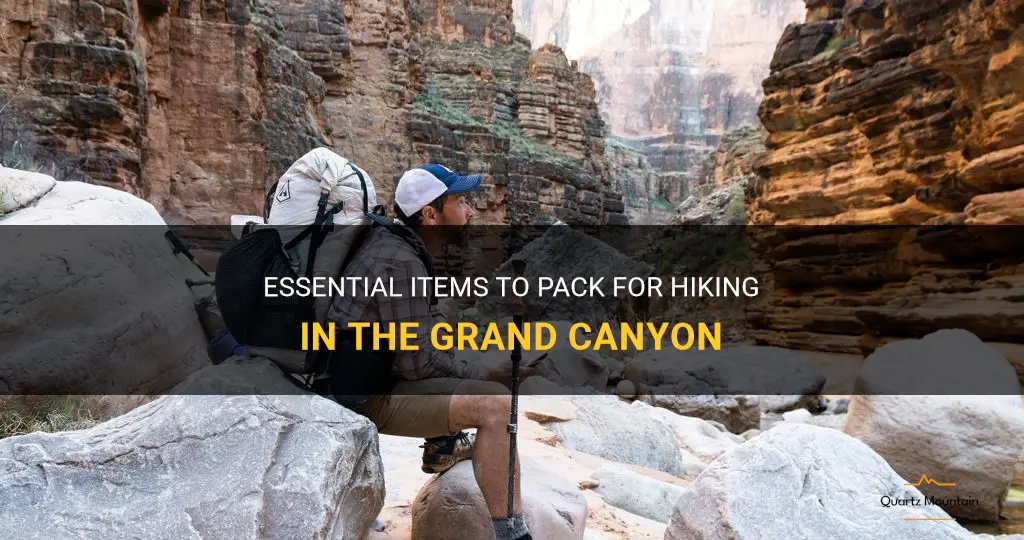
When embarking on a hiking adventure in the Grand Canyon, it's essential to come prepared with the right gear and supplies to ensure a safe and enjoyable experience. From sturdy hiking boots to ample water and sunscreen, there are certain items that should never be left off your hiking checklist. In this guide, we will explore the essential items that you must pack for a successful hike in the stunning beauty of the Grand Canyon. With these items in tow, you'll be ready to tackle the challenges of this magnificent natural wonder with confidence and peace of mind.
What You'll Learn
- What are the essential items to pack for hiking in the Grand Canyon?
- What type of clothing is best for hiking in the Grand Canyon?
- Are there any specific gear or equipment recommendations for hiking in the Grand Canyon?
- Are there any items that are not allowed or restricted in the Grand Canyon that hikers should be aware of?
- Are there any recommended safety precautions or first aid items to include in a hiking pack for the Grand Canyon?

What are the essential items to pack for hiking in the Grand Canyon?
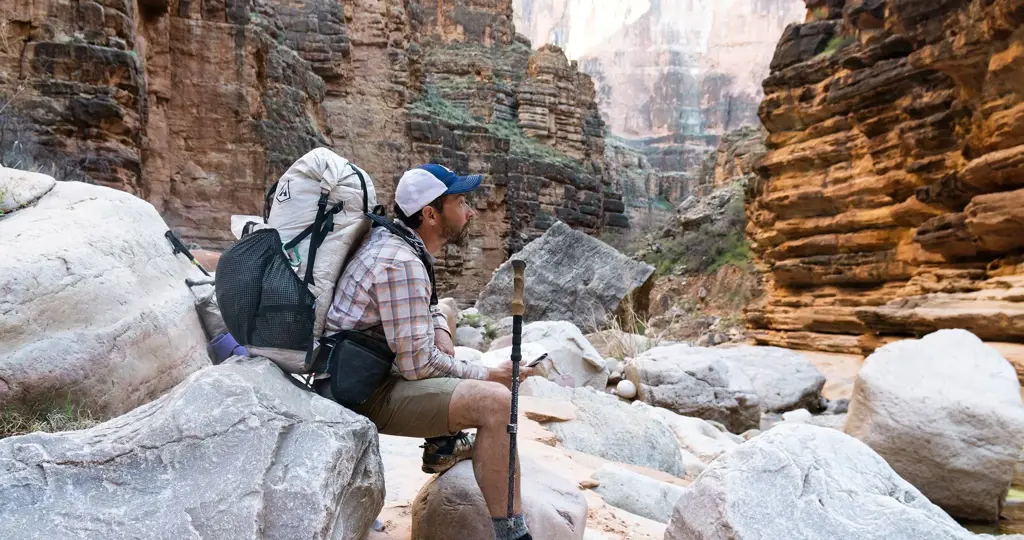
When embarking on a hiking trip in the Grand Canyon, it is crucial to pack the right items to ensure a safe and enjoyable adventure. The Grand Canyon is a vast and rugged landscape with extreme temperatures and challenging terrain. Therefore, it is essential to be prepared with the necessary gear and supplies. Here are some of the essential items to pack for hiking in the Grand Canyon.
- Proper Footwear: Hiking boots are the most important piece of gear for any hiker. In the Grand Canyon, where the terrain can be rocky and uneven, it is crucial to have sturdy boots with good ankle support. Look for boots that are waterproof and have a well-gripped sole to provide stability while hiking on uneven surfaces.
- Weather-Appropriate Clothing: The Grand Canyon experiences significant temperature fluctuations throughout the year. It is important to pack clothing that can handle both hot and cold conditions. Layering is key to adapting to changing temperatures. Start with a moisture-wicking base layer, add a warm insulating layer, and top it off with a waterproof and windproof outer layer. Don't forget to pack a hat, sunglasses, and sunscreen to protect yourself from the sun's strong rays.
- Navigation Tools: The Grand Canyon is a vast wilderness, and it is easy to get disoriented. Always carry a detailed map of the area and a compass to help you navigate the trails. Additionally, it is advisable to carry a GPS device or a smartphone with a trail map app installed. Make sure you are familiar with how to use these tools before your hike.
- Ample Water: Staying hydrated is crucial while hiking in the Grand Canyon. The dry desert environment can cause dehydration to set in quickly. Carry enough water to last the entire duration of your hike, plus some extra for emergencies. It is recommended to carry at least one liter of water for every two hours of hiking. There are also water refill stations along some of the trails, but it is always better to have your own supply.
- Snacks and Food: Hiking in the Grand Canyon can be physically demanding, and you will need to replenish your energy. Pack lightweight and high-energy snacks such as nuts, energy bars, and dried fruits to keep yourself fueled throughout the hike. For longer hikes, pack a lunch or other portable meals that do not require refrigeration.
- First Aid Kit: Accidents can happen while hiking, so it is essential to carry a basic first aid kit. The kit should include items such as bandaids, sterile gauze pads, adhesive tape, antiseptic wipes, tweezers, and any necessary personal medications. It is also a good idea to include a whistle and a flashlight in case you need to signal for help.
- Emergency Shelter: In case of an unexpected emergency or if you need to spend the night outdoors, it is important to carry a lightweight emergency shelter such as a bivy sack or a space blanket. This will provide protection from the elements and help maintain your body heat.
- Communication Devices: While hiking in the Grand Canyon, it is essential to have a reliable means of communication in case of emergencies. Carry a fully charged cell phone with a backup battery pack or a satellite phone if you are going into remote areas with minimal cell reception.
- Trekking Poles: The steep and rocky trails in the Grand Canyon can put a lot of strain on your knees and joints. Using trekking poles can provide extra stability and support, reducing the risk of injuries and fatigue.
- Waste Disposal Bags: It is important to leave no trace while hiking in the Grand Canyon. Pack waste disposal bags to carry out any trash or waste you generate on your hike. Practice responsible hiking by following the principles of Leave No Trace to protect the natural environment.
In conclusion, packing the right items for hiking in the Grand Canyon is crucial for a safe and enjoyable experience. Be prepared with proper footwear, weather-appropriate clothing, navigation tools, ample water, snacks and food, a first aid kit, emergency shelter, communication devices, trekking poles, and waste disposal bags. Remember to always research the specific trail you will be hiking and check the weather conditions before your trip. With the right gear and preparation, you can make the most of your hiking adventure in the stunning Grand Canyon.
The Ultimate Packing Guide for an All-Inclusive Resort Vacation in Cancun
You may want to see also

What type of clothing is best for hiking in the Grand Canyon?
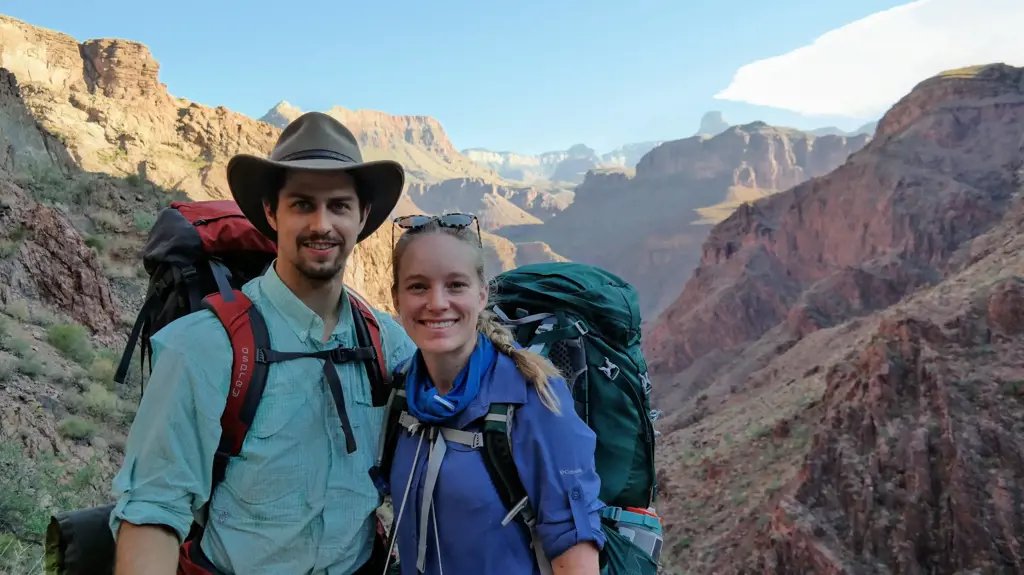
Hiking in the Grand Canyon is a unique adventure that requires proper clothing to ensure comfort, safety, and enjoyment. The extreme temperatures, rugged terrain, and varying weather conditions make it essential to choose the right type of clothing for the journey. In this article, we will discuss the clothing options that are best suited for hiking in the Grand Canyon.
- Layered Clothing: The Grand Canyon experiences significant temperature fluctuations throughout the day. It is advisable to wear layered clothing that can be easily adjusted according to the changing weather conditions. Start with a moisture-wicking base layer, such as a lightweight and breathable synthetic shirt, to keep yourself dry and comfortable.
- Breathable and Quick-drying Fabrics: It is crucial to choose fabrics that are breathable and quick-drying, especially in a place like the Grand Canyon where you can encounter unpredictable weather. Fabrics like nylon and polyester are excellent choices as they allow moisture to evaporate quickly, keeping your body cool and dry.
- Long-sleeved Shirts and Pants: Wearing long-sleeved shirts and pants provides protection against the sun's harmful rays and potential scratches from prickly plants. Look for clothing with UPF (Ultraviolet Protection Factor) to further shield your skin from the intense sun exposure. Additionally, opt for pants that are lightweight, quick-drying, and have reinforced knees and seat to withstand the rough terrain.
- Hat and Sunglasses: Protecting your head and eyes from the sun is crucial during hiking trips in the Grand Canyon. Wear a broad-brimmed hat to shade your face, neck, and ears from direct sunlight. Additionally, sunglasses with UV protection will shield your eyes from harmful rays and glare off the rocks.
- Sturdy Hiking Boots: Your choice of footwear can make or break your hiking experience in the Grand Canyon. Invest in a pair of sturdy hiking boots with ankle support, a good tread, and a firm grip. The boots should be comfortable, well-fitting, and broken in before your trip to prevent blisters and offer stability on the rocky trails.
- Socks: Never underestimate the importance of wearing the right socks. Moisture-wicking and cushioned hiking socks can protect your feet from blisters, provide extra support, and keep your feet dry, even during long hikes. It is advisable to carry extra pairs of socks in case they get wet or sweaty.
- Insulating Layers: Depending on the season and time of day, the temperature in the Grand Canyon can drop significantly. Pack a lightweight but insulating layer, such as a fleece jacket or a down vest, to keep yourself warm during cooler periods.
- Rain Gear: The weather in the Grand Canyon can be unpredictable, and rain showers can occur, even during the dry season. Carrying a lightweight and waterproof rain jacket and pants will protect you from getting wet and becoming excessively cold.
- Accessories: Don't forget to bring essential accessories such as gloves, a buff or scarf, and a bandana. Gloves are useful for protecting your hands while navigating rocky trails or scrambling. A buff or scarf can act as a versatile accessory to protect your neck, face, or head from sunburn, wind, or cold. A bandana can be soaked in water and placed around your neck to keep cool during hot hikes.
It is important to note that cotton clothing should be avoided as it retains moisture and can make you feel uncomfortable and cold. Additionally, always check the weather forecast before your trip and be prepared for sudden changes. Packing the right clothing for hiking in the Grand Canyon will ensure a safer and more enjoyable experience while exploring this awe-inspiring natural wonder.
Essential Sunscreen Packing Tips for a Trip to Chrissy Fields
You may want to see also

Are there any specific gear or equipment recommendations for hiking in the Grand Canyon?
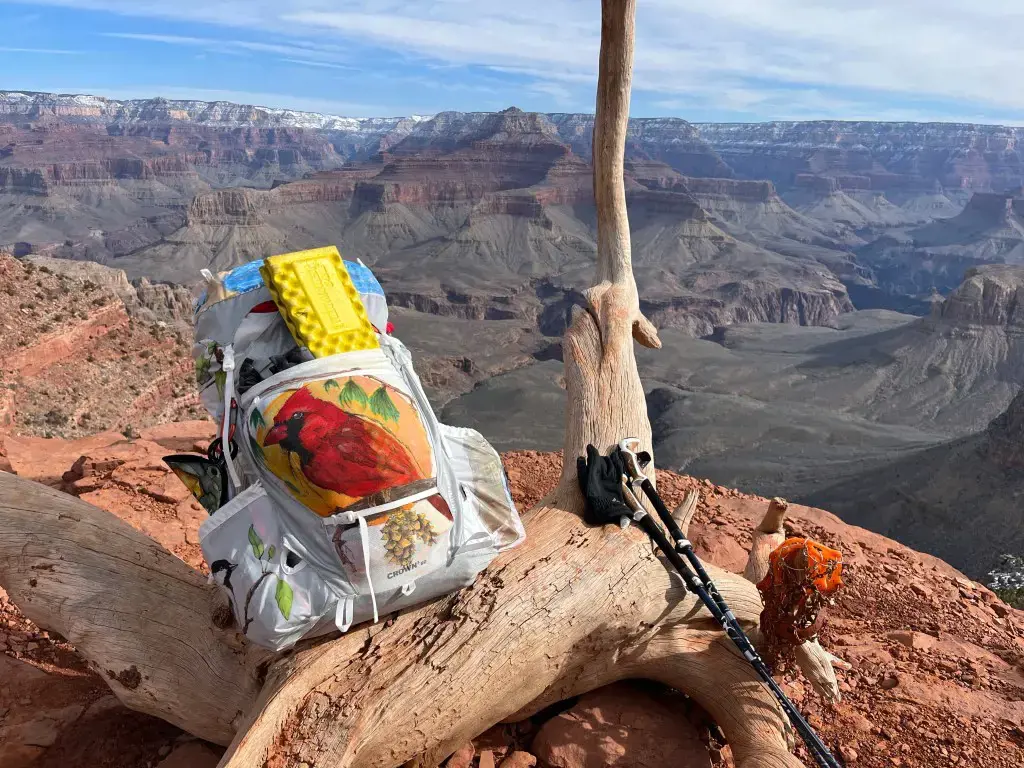
Hiking in the Grand Canyon can be an incredible adventure, but it is important to be prepared with the right gear and equipment. The Grand Canyon is a vast and rugged landscape, and the weather conditions can be extreme. Here are some specific recommendations for gear and equipment for hiking in the Grand Canyon.
- Footwear: One of the most important pieces of gear for hiking in the Grand Canyon is a good pair of hiking boots. The terrain in the canyon can be rocky and uneven, so it is important to have sturdy footwear that provides good ankle support. Look for boots with a Vibram sole for extra traction, and make sure they are broken in before your hike to prevent blisters.
- Clothing: Layered clothing is key for hiking in the Grand Canyon. The temperature can vary significantly throughout the day, so it is important to be able to adjust your clothing accordingly. Start with a moisture-wicking base layer to keep you dry and comfortable, then add on a fleece or lightweight jacket for warmth. A waterproof and windproof outer layer is essential, as the weather in the canyon can be unpredictable.
- Backpack: A good backpack is essential for carrying all of your gear and supplies. Look for a backpack with a capacity of at least 40 to 50 liters, as you will need to carry plenty of water, food, and additional clothing. Make sure the backpack has a padded hip belt and shoulder straps for comfort, and consider getting a pack with a built-in hydration system or a separate water bladder.
- Navigation: The Grand Canyon is a maze of trails, so it is important to have a reliable navigation system. Bring a detailed map of the area and a compass in case you need to orient yourself. You may also want to consider bringing a GPS device or a smartphone with GPS capabilities and a reliable offline maps app.
- Water: Staying hydrated is crucial while hiking in the Grand Canyon, as the dry desert climate can quickly lead to dehydration. Plan to carry at least one gallon (3.8 liters) of water per person per day, and consider using a water purification system or water treatment tablets to refill your water supply from natural sources like springs or creeks along the way.
- Food: Hiking in the Grand Canyon requires a lot of energy, so it is important to fuel your body with nutritious food. Pack lightweight, high-energy snacks like trail mix, energy bars, and dried fruits. Plan to have a balanced meal at the beginning and end of each day, and make sure to bring enough food to sustain you throughout your entire hike.
- Safety Gear: It is essential to have some basic safety gear while hiking in the Grand Canyon. Bring a first aid kit with supplies for treating blisters, cuts, and other minor injuries. It is also a good idea to carry a whistle, a headlamp or flashlight, and a multi-tool with a knife and other useful tools.
Remember, hiking in the Grand Canyon can be physically demanding and potentially dangerous, so it is important to be prepared with the right gear and equipment. Make sure to research and plan your hike in advance, check the weather forecast, and let someone know your itinerary. With the proper gear and preparation, hiking in the Grand Canyon can be an unforgettable experience.
What to Pack for a Carnival Adventure: Your Complete Guide for Fun and Festivities
You may want to see also

Are there any items that are not allowed or restricted in the Grand Canyon that hikers should be aware of?
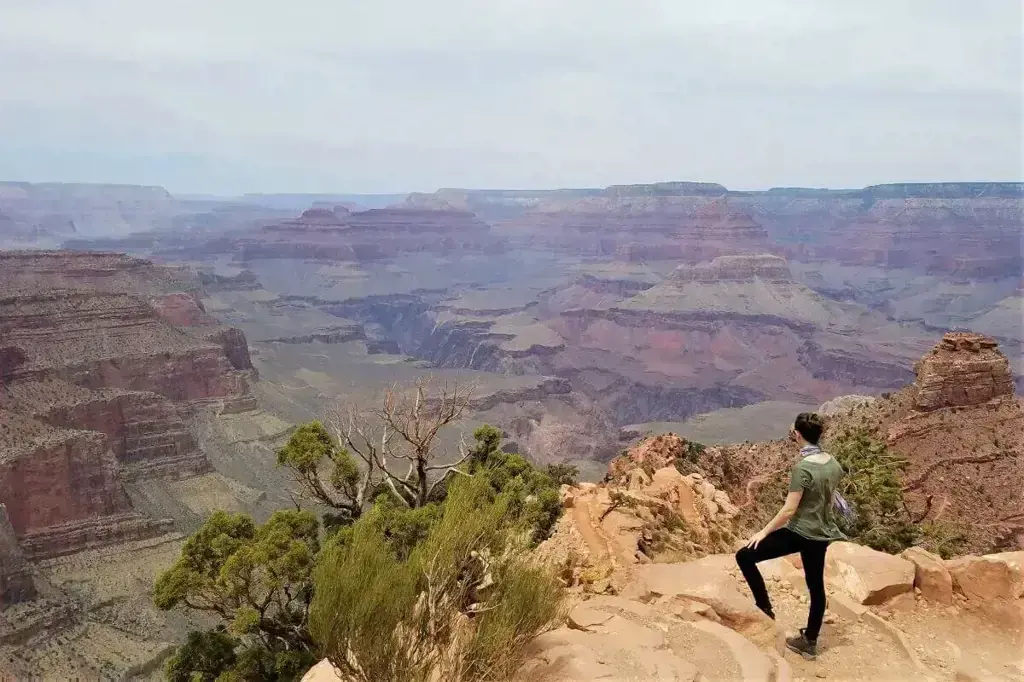
When planning a hike in the Grand Canyon, it's important to be aware of any items that may not be allowed or are restricted within the national park. The park has certain regulations in place to protect the delicate ecosystem and preserve the natural beauty of the area. By adhering to these restrictions, hikers can help ensure the preservation of the Grand Canyon for future generations.
Here are some items that are not allowed or restricted in the Grand Canyon:
- Drones: The use of drones is strictly prohibited within the park. Drones can be disruptive to wildlife and other visitors, and can also pose a safety risk. It's important to leave drones at home when exploring the Grand Canyon.
- Glass containers: Glass containers are not allowed in the Grand Canyon due to their potential to shatter and create hazards for wildlife and other visitors. It's best to transfer any liquids or snacks into plastic or reusable containers before entering the park.
- Weapons: Firearms and other weapons are not permitted within the Grand Canyon, including concealed carry permits. This regulation helps maintain a safe and peaceful environment for all visitors. It's important to leave any weapons at home or properly secured in a vehicle outside the park boundaries.
- Excessive amounts of food: While it's important to bring enough food to sustain oneself during a hike in the Grand Canyon, it's also important to avoid bringing excessive amounts of food. This helps prevent the attraction of wildlife and protects both animals and visitors. Always pack out any food waste to minimize impact on the environment.
- Unmanned aerial vehicles (UAVs): Similar to drones, UAVs are not allowed within the Grand Canyon. These devices can be disruptive to wildlife, cause noise pollution, and interfere with the natural tranquility of the park. Visitors should not operate UAVs or similar devices within the park boundaries.
- Chainsaws and power tools: The use of chainsaws and other power tools is not permitted within the Grand Canyon. These tools can disturb the peace and serenity of the park, and their use is best left to authorized park personnel for essential maintenance purposes. Hikers should plan to use hand tools or leave any power tools at home.
It's important for hikers in the Grand Canyon to familiarize themselves with all park regulations before embarking on their journey. By doing so, hikers can help protect the delicate ecosystem and ensure an enjoyable experience for all visitors. The Grand Canyon is a national treasure, and it's our responsibility to treat it with the utmost respect and care.
Essential Items to Bring for Your Cape Cod Trip
You may want to see also

Are there any recommended safety precautions or first aid items to include in a hiking pack for the Grand Canyon?
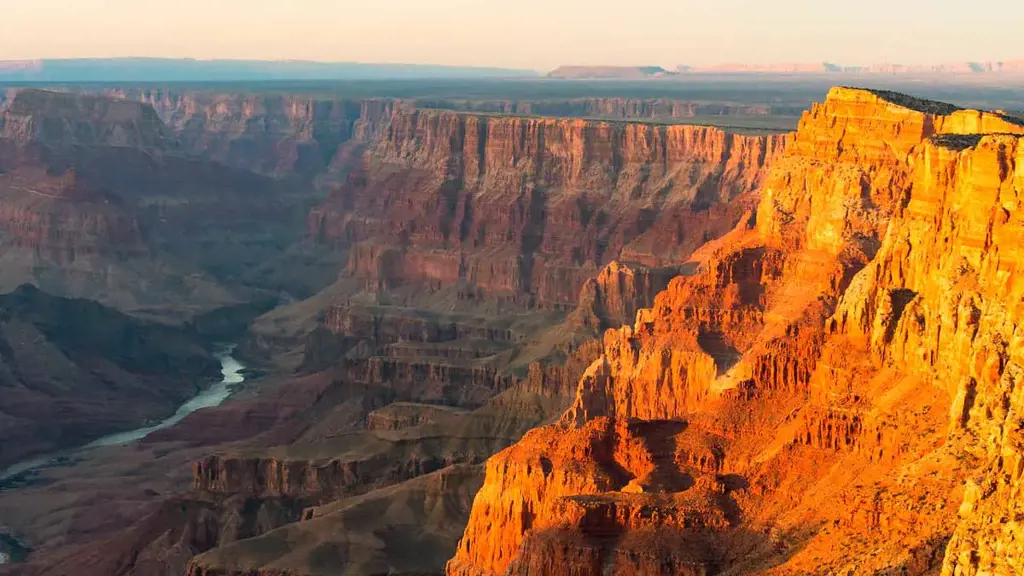
When planning a hike in the Grand Canyon, it is essential to prioritize safety. The rugged terrain and extreme temperatures can pose significant risks, so it is vital to be prepared. This article will provide recommendations for safety precautions and first aid items to include in a hiking pack for the Grand Canyon.
- Pack Sufficient Water: Staying hydrated is crucial in the Grand Canyon's desert environment. As a general rule, hikers should carry at least one gallon (3.8 liters) of water per person per day. This amount can vary depending on the weather conditions and the length of your hike. It is advisable to carry a water filtration system or water purification tablets as a backup in case you run out of water.
- Dress Appropriately: The Grand Canyon experiences a wide range of temperatures throughout the year, so having the right clothing is essential. In the summer months, opt for lightweight, breathable fabrics that provide sun protection. In cooler months, layering is key. Remember to wear sturdy hiking boots or shoes that provide ankle support to help prevent injuries.
- Protect Against the Sun: The sun's rays can be intense in the Grand Canyon, so protection is crucial. Use a broad-spectrum sunscreen with an SPF of 30 or higher and apply it generously before starting your hike. Wear a wide-brimmed hat and sunglasses to shield your face and eyes from the sun. Lip balm with SPF is also recommended to prevent sunburn.
- Carry a Basic First Aid Kit: A well-stocked first aid kit is an essential item for any hike. It should include band-aids, adhesive tape, sterile gauze pads, antiseptic ointment, tweezers, and pain relievers. Additionally, include any personal medications you may need during your hike. Familiarize yourself with basic first aid procedures and know how to administer aid in case of an emergency. Taking a basic first aid course before your trip is also highly recommended.
- Pack High-Energy Snacks: Hiking in the Grand Canyon requires endurance, and it is crucial to fuel your body properly. Pack high-energy snacks such as granola bars, trail mix, dried fruit, and nuts to provide a quick energy boost throughout your hike. It is also a good idea to carry extra food in case your hike takes longer than anticipated.
- Use Trekking Poles: The Grand Canyon's rugged and uneven terrain can be challenging to navigate. Using trekking poles can provide extra stability and reduce the risk of falls or injuries. They can help distribute your weight more evenly and take some of the stress off your joints, particularly during steep ascents and descents.
- Check the Weather Forecast: Before embarking on your hike, check the weather forecast for the Grand Canyon. Sudden changes in weather can occur, so it is essential to be prepared for any conditions. If there is a chance of rain or thunderstorms, it is advisable to postpone your hike as flash floods can be dangerous in the canyon.
- Inform Others of Your Plan: Always let someone know about your hiking plans, including your starting point, intended route, and estimated return time. This information can be crucial in case of an emergency. Consider using a GPS device or smartphone app to track your progress during the hike.
Hiking in the Grand Canyon can be a memorable and rewarding experience, but it is essential to prioritize safety. By following these recommended safety precautions and having the right first aid items in your hiking pack, you can minimize risks and have a safe and enjoyable adventure in this stunning natural wonder.
Essential Packing List for a Two-Week Trip
You may want to see also
Frequently asked questions
When hiking in the Grand Canyon, it is important to pack the essential items to ensure a safe and enjoyable experience. These include sturdy hiking boots, a backpack, plenty of water, snacks, a map or GPS device, sun protection (hat, sunglasses, sunscreen), a first aid kit, a flashlight or headlamp, and appropriate clothing layers for changing weather conditions.
Yes, it is important to dress appropriately for the hiking conditions in the Grand Canyon. This includes lightweight, moisture-wicking clothing to help keep you cool and dry, a wide-brimmed hat to protect you from the sun, and sturdy, ankle-high hiking boots with good traction. Additionally, it is recommended to bring extra layers such as a fleece jacket or a windbreaker in case of temperature changes.
Staying hydrated is crucial when hiking in the desert environment of the Grand Canyon. It is recommended to drink at least one gallon (3.8 liters) of water per person per day. This amount may be higher in hotter weather or if you are exerting more energy. It is important to bring enough water with you or know where water sources are along your hiking route.
When hiking in the Grand Canyon, it is important to bring snacks that are lightweight, compact, and provide sustained energy. Good options include trail mix, energy bars, dried fruit, nuts, and jerky. It is also a good idea to bring quick-energy snacks like granola bars or fruit snacks for a boost of energy during longer hikes.
Yes, there are several safety precautions to take when hiking in the Grand Canyon. It is important to hike with a buddy or let someone know your hiking plans, stay on designated trails, and be aware of your physical abilities and limitations. It is also important to check the weather forecast before your hike and be prepared for changing conditions. Finally, it is crucial to follow Leave No Trace principles and pack out all trash and waste.







